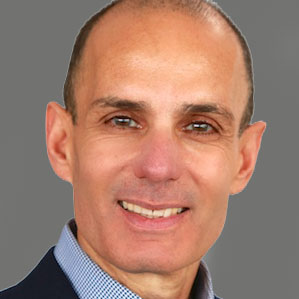Do you have what it takes to stay the course?
I have coached many teams and organizations in creating bold and aspirational strategies that take their success to the next level.
Every transformation begins with setting ambitious goals. And every team emerges from this initial exercise highly optimistic, energized and eager to achieve a better future for their company and themselves.
Time and time again, I am impressed and inspired by leaders’ genuine enthusiasm, commitment, and resolve to realize aspirational goals that, at the outset are often viewed as beyond current.
Unfortunately, when it comes to fulfilling aspirational goals and transformational change, there are two types of leaders: those who stay the course and those who don’t.
Some leaders love the thrill of a new idea, fad or beginning, especially when it helps them to engage and motivate their teams around a new purpose. As long as their effort continues to progress with even mild success, and managers and employees continue to feel good about the process and engage in its activities, these leaders stay engaged and continue to invest their own commitment, energy, time, and resources into the process.
However, the minute things get tough or messy, instead of doubling down and using challenges as opportunities for change, these leaders quickly turn skeptical, lose their faith, commitment, energy, and resolve. Eventually, they get distracted by other activities, lose interest, disengage, and move on to the next new thing.
It is easy to stay engaged and focused at the beginning of big change initiatives when everyone is in the initial excitement stage, there is increased goodwill all around, and people tend to be on their best behavior in terms of trust, teamwork, and collaboration.
However, if you take on any Big Hairy Audacious Goal, it is inevitable that at some point in your journey, you will have to confront your barriers to change. Marathon runners describe this as hitting the wall. It’s the moment, about halfway through the run, when overwhelming fatigue kicks in, and you feel like you may not have what it takes to finish the race. It’s a devastating and discouraging feeling. If you buy into this, it can hurt your performance. However, if you anticipate this phenomenon and prepare for it, you can get through the tough patches with minimal distractions in focus, commitment, and effectiveness.
It is exactly the same thing when pursuing a big aspirational change initiative.
The wall often manifests as: people feeling overwhelmed with keeping up with their existing jobs while transitioning to future work, initiatives taking more time and energy than initially expected to demonstrate results, people losing faith because of temporary dip in performance and results, and people beginning to disengage because of growing frustrations and skepticism.
Leaders who trust the process, push forward and stay the course, no matter what, achieve extraordinary results.
Take, for example, the CEO of a large autocar manufacturing company who launched a much-needed performance and culture change initiative to leap production and sales results. He defined the process as a two-year transformation and got all his senior leaders on board, excited to own the process. Like most transformational initiatives, they started strong and achieved noticeable breakthroughs in production efficiency and output. However, halfway through the first year, the markets changed. While production continued to improve, sales started to suffer, and they ended up behind on their first-year sales results.
Instead of leveraging the breakthroughs that his team achieved in production to send a message of confidence and encouragement to his team, the CEO repeatedly discarded all accomplishments and progress and instead highlighted his frustration and disappointment at the process’s failure. His attitude dampened morale, fostered discouragement and resignation, and slowed momentum.
Contrast this story with the CEO of a technology integration company who launched a transformation process to break through his long-time sales glass ceiling. As the company battled COVID, global supply chain issues, and local economic and market trend challenges, he stayed firm in his conviction to drive change. His change initiative remained a top priority. He insisted on continuing the process and demanded that his leaders do the same, even when everyone was stretched thin and complaining about the extra work.
In his second year, he exceeded all his aspirational goals. In his sixth year, he doubled his company and positioned it as a market leader. Throughout his change process, his team achieved significant breakthroughs in new technology and product adoption and new market penetrations. Morale in his company soared, and his leaders and managers are even more excited today about the next breakthroughs ahead.
Unfortunately, most leaders are not good at staying the course. Many leaders simply don’t know how to remain focused when they don’t know what to do next. They tend to stall, stop, and eventually give up. Others can’t tolerate things getting worse before they get better, so they react badly to chaos, messy situations, and unpredictable challenges, which are inevitable in any big game.
Most leaders and teams fall short or fail to achieve their intended transformation outcomes not because they go all the way and fail, but rather because they do not stay the course and give up at the most critical time in the process.
And to add insult to injury, most leaders don’t take ownership and acknowledge the simple truth: “We simply didn’t stay the course!” They usually tend to justify their failure with excuses like: “There is too much going on,” “The change initiative is interfering with our core business or results,” and “People are no longer on board.”
The cost of not staying the course lies not only in failing to achieve higher levels of performance and results but, more importantly, in the cynical attitudes—both overt and covert—that arise from the defeat in pursuing great aspirations and dreams.
My recommendation to leaders who want to pursue big, hairy, audacious goals: Stay the course no matter what, or don’t start at all!




Leave a Reply
Want to join the discussion?Feel free to contribute!